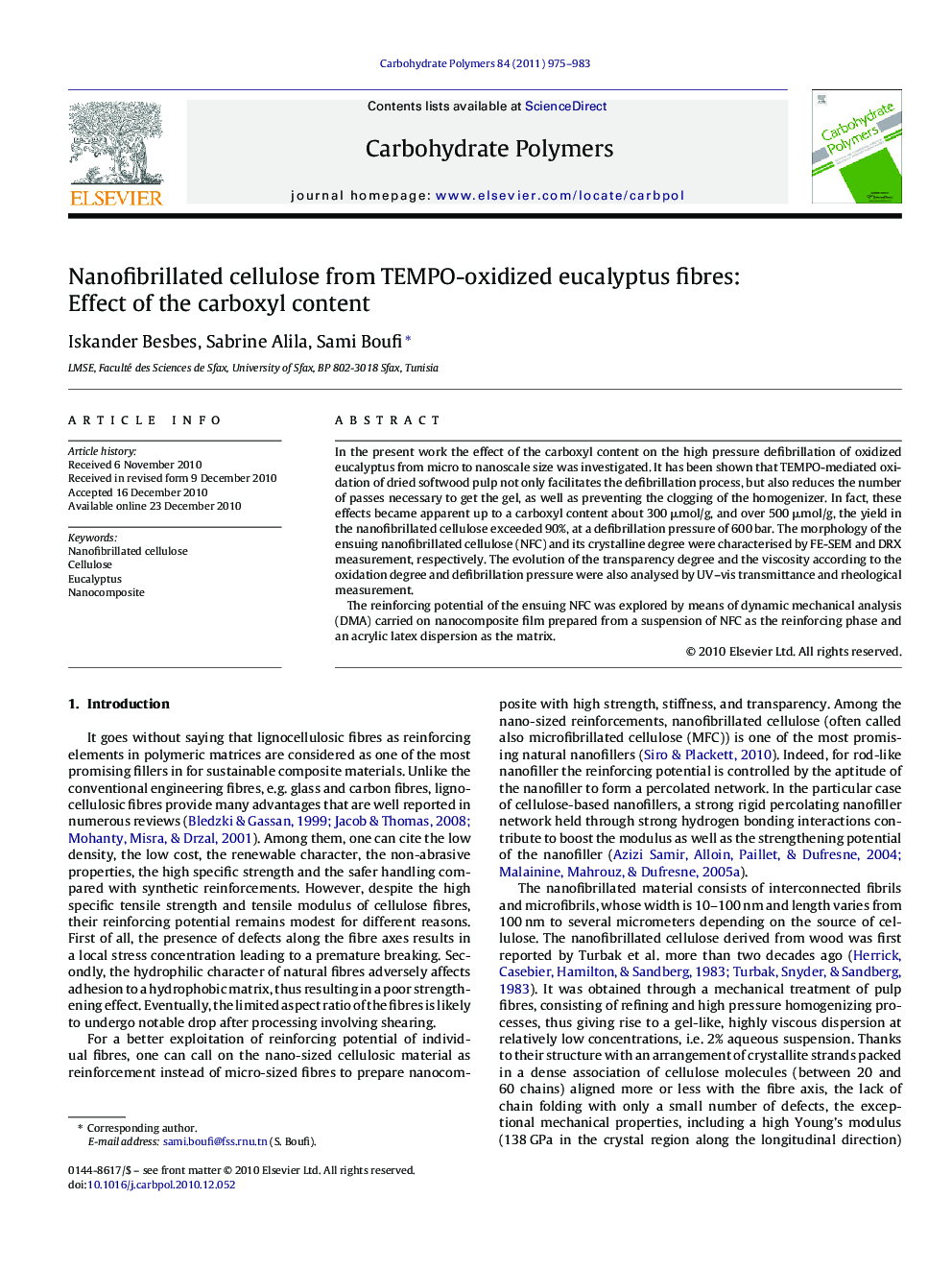| Article ID | Journal | Published Year | Pages | File Type |
|---|---|---|---|---|
| 1386601 | Carbohydrate Polymers | 2011 | 9 Pages |
In the present work the effect of the carboxyl content on the high pressure defibrillation of oxidized eucalyptus from micro to nanoscale size was investigated. It has been shown that TEMPO-mediated oxidation of dried softwood pulp not only facilitates the defibrillation process, but also reduces the number of passes necessary to get the gel, as well as preventing the clogging of the homogenizer. In fact, these effects became apparent up to a carboxyl content about 300 μmol/g, and over 500 μmol/g, the yield in the nanofibrillated cellulose exceeded 90%, at a defibrillation pressure of 600 bar. The morphology of the ensuing nanofibrillated cellulose (NFC) and its crystalline degree were characterised by FE-SEM and DRX measurement, respectively. The evolution of the transparency degree and the viscosity according to the oxidation degree and defibrillation pressure were also analysed by UV–vis transmittance and rheological measurement.The reinforcing potential of the ensuing NFC was explored by means of dynamic mechanical analysis (DMA) carried on nanocomposite film prepared from a suspension of NFC as the reinforcing phase and an acrylic latex dispersion as the matrix.
